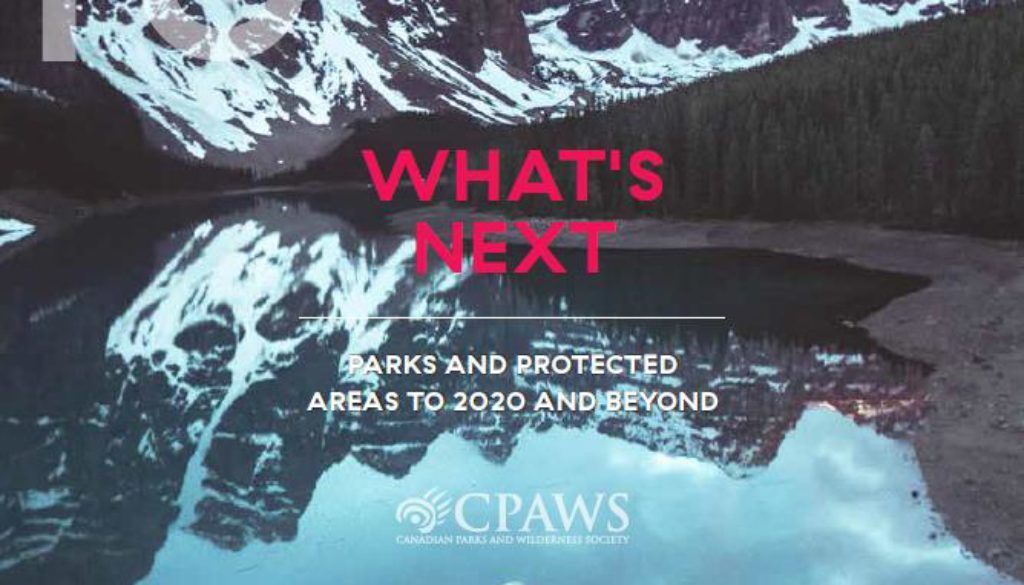Annual Parks Report Outlines Action Plan for Meeting Canada’s Land and Freshwater Protection Targets
OTTAWA – The Canadian Parks and Wilderness Society (CPAWS) released its annual Parks Report today, What’s Next: Parks and Protected Areas to 2020 and Beyond, which recommends how governments in Canada – federal, provincial, territorial and Indigenous – can work together to achieve Canada’s international commitment to protect at least 17% of our landscape by 2020, and to plan for the longer-term work needed to reverse the catastrophic and ongoing decline in nature. Canada has the greatest opportunity in a generation to protect nature – and this report provides a roadmap for action.
The commitment by all jurisdictions in Canada to work together to achieve the 2020 protected area target, along with the $1.3 billion investment in conservation in the 2018 federal budget, creates an unprecedented opportunity for Canada to safeguard nature in the spirit of reconciliation between Indigenous governments and Crown governments, and between all peoples in Canada and nature.
Diverse voices across the country are now calling for action on protected areas, and momentum is growing. With 2020 right around the corner, people are asking, “can Canada do this?” The answer is YES. In the report, CPAWS identifies places in each jurisdiction where a considerable amount of collaborative work has already been done on proposed protected areas. If the proposed areas are protected Canada would reach 14% protection – and there are many other proposed places not yet publicly identified. For example, many Indigenous communities across Canada are in the process of developing proposals for protection of their traditional lands and territories.
“By completing the protection of these sites, and advancing conservation-focused land use plans, Canada can achieve its 2020 protection commitments and set the stage to go beyond to protect what natures really needs,” says Alison Ronson, CPAWS’ National Director, Parks Program. “Canada also has the opportunity to become a global leader in protecting nature in a way that supports Indigenous-led protected areas and advances reconciliation.”
With the 2020 target fast approaching, CPAWS makes the following recommendations — that federal, provincial, and territorial governments:
- Demonstrate their commitment by publicly announcing the areas they intend to protect by 2020 to contribute to meeting the target. These areas should, to the greatest degree possible, be representative, connected, and effectively managed for the conservation of biodiversity;
- Develop a science and Indigenous knowledge-based plan by 2020 for completing an effective network of interconnected protected areas that will act as a foundation for conserving nature in the face of climate change;
- Make a clear commitment to adhere to recognized standards for the protection of nature, including those developed by the International Union for the Conservation of Nature and the Canadian Council on Ecological Areas;
- Ensure conservation funding from federal Budget 2018 is allocated primarily to support the creation of new protected areas by federal, provincial, territorial, and Indigenous governments and other partners; and
- Collaborate with Indigenous governments to create Indigenous protected areas and remove barriers holding up progress.
The report also includes recommendations for more specific actions in each region of Canada.
CPAWS is ready to work with federal, provincial, territorial and Indigenous governments on protecting our most iconic landscapes and the wildlife that call them home.
Read More
Parks Report 2018 – Executive Summary



